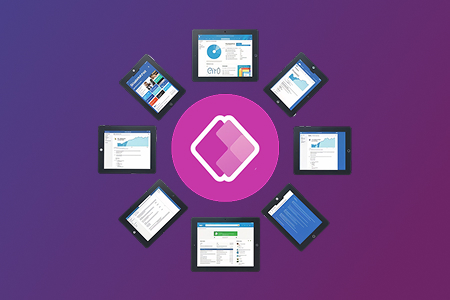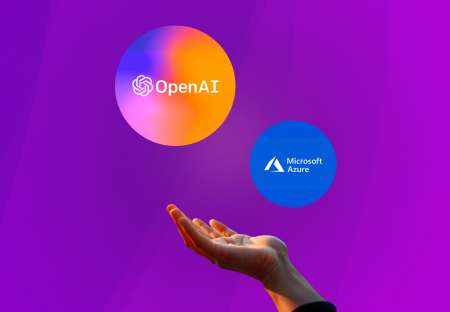In this era of dog-eat-dog competition, it is hard to accomplish the business goals without a comprehensive suite of Enterprise Solutions of software to back up Low-Code and No-Code the many internal operations.
Having access to the appropriate tools is a MUST in today’s competition. The right Enterprise Solutions can help your business grow tremendously. With the right solution, you would be able to improve the effectiveness of the processes, cut down on manual labor, save time, and speed up the operation as a whole.
Wondering how you can do that when your team doesn’t possess the required knowledge?
Well, worry not!
There is a key to every lock, including this one as well.
So, if you want to know the solution, continue reading this post. In this post, we shall discuss the Low-Code and No-Code platforms for Enterprise Solutions.
Let’s get started…
What are Low-Code and No-Code Platforms?
The Enterprise Solutions “low-code” and “no-code” refer to two different types of development platforms. These platforms are tools for those who do not know how to code or do not have the time to code.
End users are not concerned with the minutiae of these low-code and no-code frameworks, despite the fact that they are built on genuine programming languages such as PHP, Python, and Java.
They are instead provided with graphical software development environments in which they may move program components about by dragging and dropping, linking them, and observing the results of their actions.
In practice, it may be used as a familiar wizard-style paradigm to construct, test, and even deploy Enterprise Solutions and applications that are fully focused on ease of use.
Low-code development accelerates Enterprise Solutions for application development. The process of designing an application can be made easier with the assistance of web-based drag-and-drop functions, as well as reusable application components and in-built libraries.
Companies are now able to deploy their applications in a shorter amount of time and implement updates with less notice.
What exactly is “enterprise application?”
Software that large organizations utilize to build and operate company operations, such as sales, marketing, customer support, supply chain, CRM, and many more some examples of enterprise applications. They connect to or integrate with other corporate applications, which results in a larger enterprise system overall.
These applications are developed specifically for use in large businesses with hundreds or thousands of employees.
How low-code and no-code platforms are disrupting the development of Enterprise Solutions?
Platforms that need little to no coding at all have become more popular as a viable alternative to traditional methods of application creation. The low-code and no-code platforms can be used to develop strong, scalable, and secure Enterprise Solutions in no time.
In many cases, neither commercially available software nor bespoke solutions can satisfy the requirement that businesses have for the rapid implementation of highly specialized business applications. In such a situation, low-code and no-code platforms come in handy.
Research indicates that by the year 2024, three out of every four large businesses will be utilizing a minimum of four low-code development tools for developing enterprise-level applications.
So, if you’re wondering whether or not Low-Code/No-Code Good for Enterprise Solutions, then read ahead.
Is Low-Code/No-Code Good for Enterprise Solutions?
The quickest answer to this is YES!
Developing Enterprise Solutions using low-code and no-code platforms is great. These platforms can not only create user-friendly applications but also address several business issues, such as lack of coding knowledge for developing code-intensive solutions, budget constraints, bandwidth issues, and so on.
No-code tools give non-developers the ability to create, change, and use Enterprise Solutions programs with ease. Software with low or no coding requirements enables businesses to respond quickly and nimbly to changing customer demands.
Aside from that, they assist businesses in solving business problems and improving team cooperation and productivity. With the help of no-code platforms, companies can accomplish their corporate objectives and develop a mature digital ecosystem. The “low code” features allow them to operate more quickly and effectively.
In contrast to the conventional way of writing complex codes, low-code and no-code platforms allow users to build complete Enterprise Solutions through the use of a visual development methodology.
The two approaches, low-code and no-code are distinct from each other and cannot be substituted for one another, although their combination produces the best results.
No-code platforms allow business users without prior coding skills to construct applications from reusable, functional building parts.
While with low-code platforms, developers can write some code to use during the process of creating new apps.
Both platforms have significantly simplified and sped up the app development procedure.
When used together, low-code/no-code platforms make it possible to rapidly construct software applications. Simultaneously they meet specific business requirements using the skills and resources that are already available.
Wrapping it up…
Enterprise Solutions are all about low-code/no-code platforms. Hopefully, this article has been informative for you and has helped you understand that these two platforms are good for developing Enterprise Solutions.
If using no-code and low-code seems like a task, then contact us. We at Metaorange Digital, can help you develop the best and most user-friendly Enterprise Solutions.
Contact us for more information [email protected]
Learn More: Office 365 & Power Apps Services of Metaorange Digital










